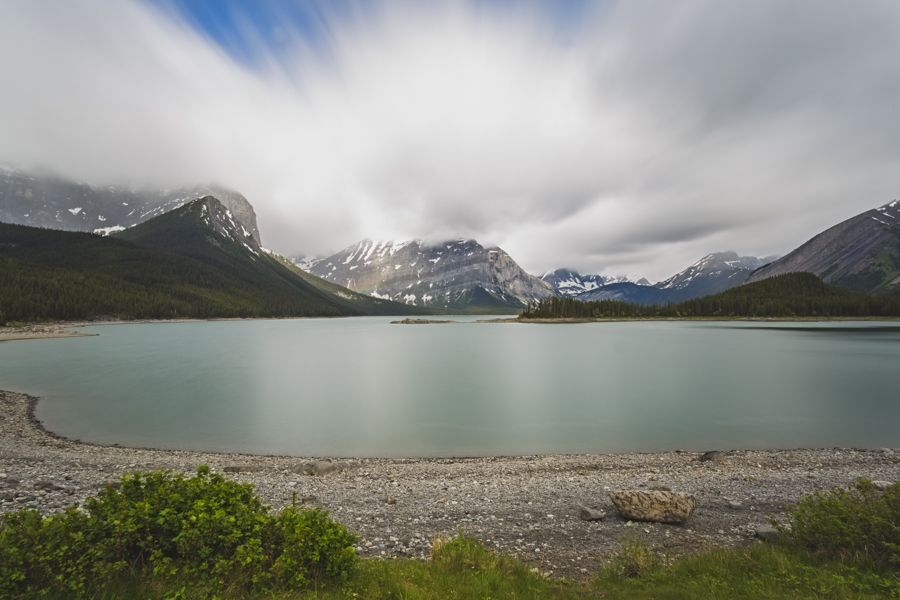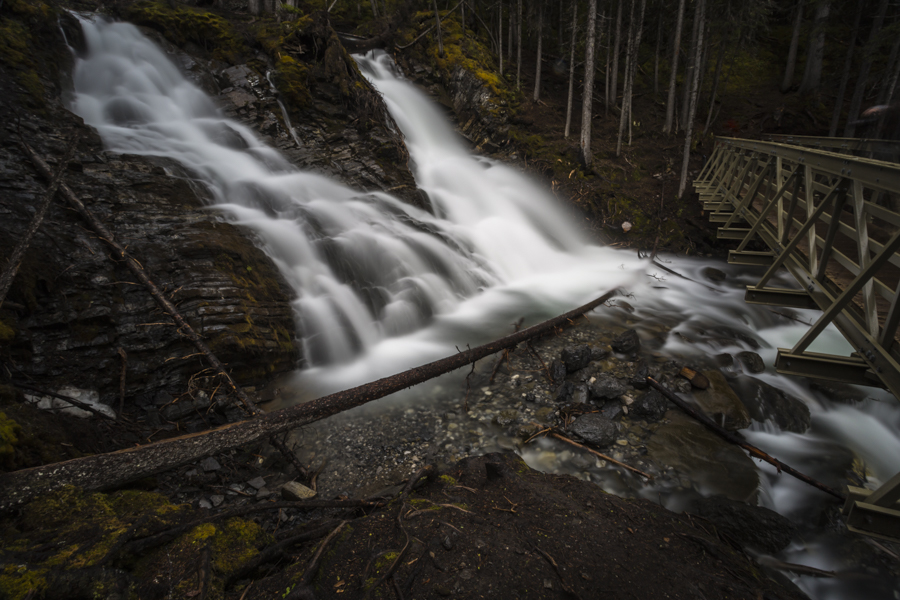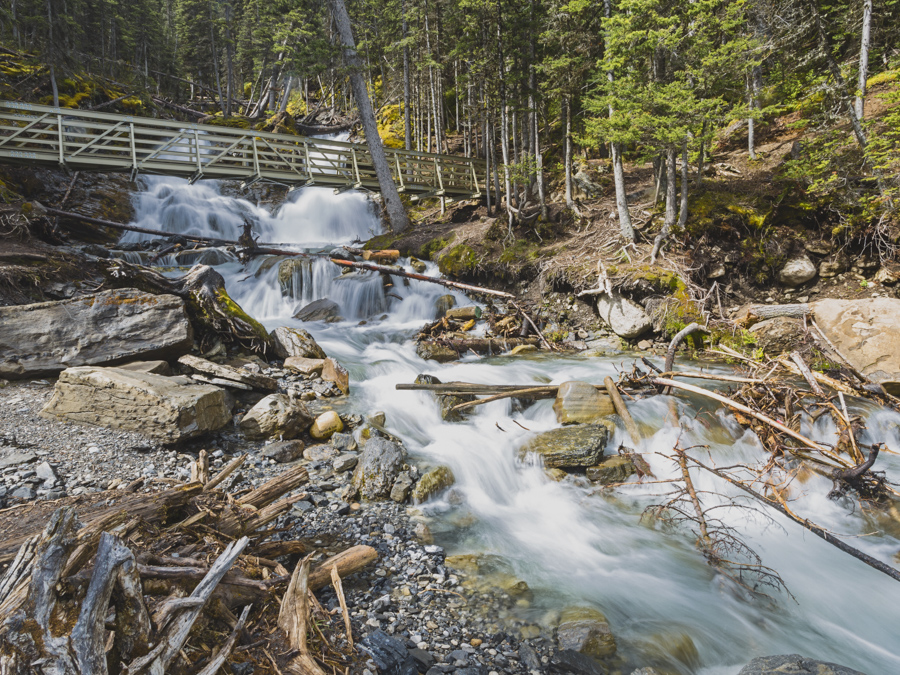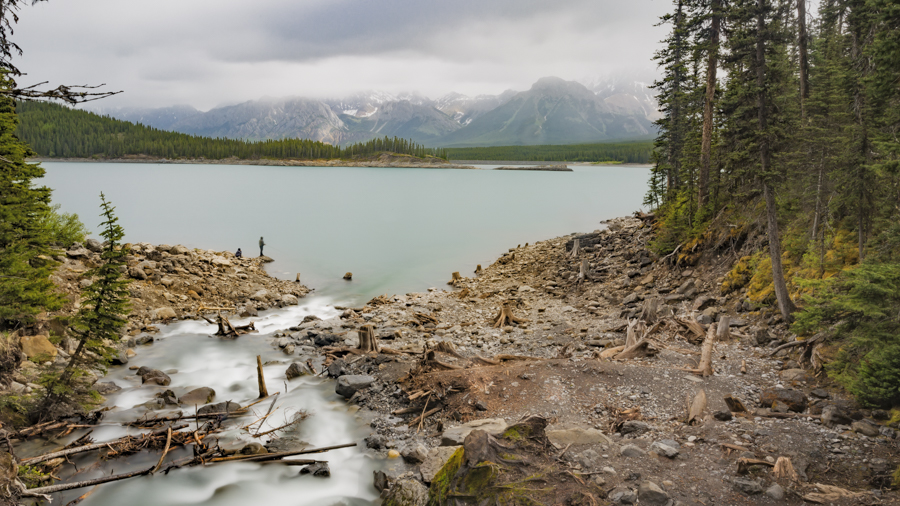Long exposure photographs are simply ones with lengthy shutter openings (several seconds to several minutes). The technique is to use a tripod to ensure there is no camera movement whatsoever and to gather the light on the sensor over a long period of time. It’s easy at night; there isn’t much light so it takes longer to accumulate what you need to produce the image on the sensor. In daytime, it’s necessary to impede the gathering of light to extend the period the shutter is open. This is achieved by reducing the sensor’s sensitivity to light (ISO) by using a very small aperture (< f/20) and by using a multi-stop (10-15 stops) neutral density filter on the lens to impede the light entering.
Things in the scene that are stationary will be appear as they are, motionless. Things in the scene that are moving produce motion blur, often with very striking effect. Good examples are the tail lights of moving vehicles photographed at night, moving water and moving clouds.
Following are four photographs from a recent trip to Upper Kananaskis Lake with photographer friends, Bob Bear and Stew Hamilton. It was a good day to photograph moving clouds, windy with broken clouds. It was also a good time to photograph moving water, with spring runoff well underway.
The first image was taken looking down the lake toward Mount Lyautey. The wind was blowing in our direction, producing a “fan” effect as the clouds appear to spread out as they approach. You’ll also notice that the water is very smooth. Not really, any chop on its surface is blurred by the long exposure, creating the calmed appearance. This picture was taken with an ISO setting of 50, the aperture at f/22 and I kept the shutter open for 60 seconds. The operation is totally manual, with no automatic exposure control. It usually requires 2-4 shots to narrow in to a desired exposure. The exposure is simply varied by trying different shutter openings until you find the one you like. With the camera in the “bulb exposure” mode, the shutter can be locked open using a remote shutter control (cable or wireless).

My second effort of the day was taken at Sarrail Falls, further around the lake to the left. This is a location where Sarrail Creek cascades down a steep, rocky slope before flowing into Upper Kananaskis Lake. The camera settings for this picture were virtually the same as for the previous photograph. Since I was in the forest, there was less light and the image is darker, with the same duration of shutter opening. I like the under-exposed background; it helps to highlight the flowing water. With such a long exposure (60 seconds) the blur effect is quite striking, very soft-looking water.

The next photograph shows how the appearance of the moving water can be changed by playing with the shutter speed. This picture was taken a little downstream, and out of the forest. Camera settings remained the same except for the shutter speed, reduced to 1/5 second. I might describe this shot as being at the short end of a long exposure. The effect is markedly different. I prefer it to the much longer exposure.

This last picture was taken from the bridge just upstream of where Sarrail Creek enters Upper Kananaskis Lake. In this case, I’m trying to get the effect of both water and cloud movement. I was more successful with the water. Although I did capture some blurring of the cloud, it’s much less apparent than when the cloud is more broken and moving toward the camera. Nonetheless, I quite like the photograph.


Neato!